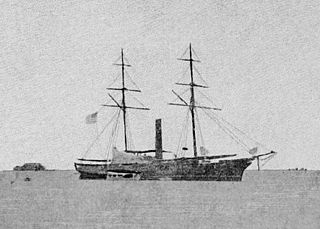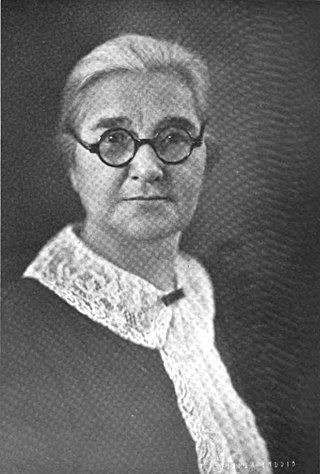
The Tlingit or Lingít are Indigenous peoples of the Pacific Northwest Coast of North America and constitute two of the two-hundred thirty-one federally recognized Tribes of Alaska. Although the majority, about 14,000 people, are Alaska Natives, there is a small minority, 2,110, who are Canadian First Nations.

Totem poles are monumental carvings found in western Canada and the northwestern United States. They are a type of Northwest Coast art, consisting of poles, posts or pillars, carved with symbols or figures. They are usually made from large trees, mostly western red cedar, by First Nations and Indigenous peoples of the Pacific Northwest Coast including northern Northwest Coast Haida, Tlingit, and Tsimshian communities in Southeast Alaska and British Columbia, Kwakwaka'wakw and Nuu-chah-nulth communities in southern British Columbia, and the Coast Salish communities in Washington and British Columbia.

Sitka is a unified city-borough in the southeast portion of the U.S. state of Alaska. It was under Russian rule from 1799 to 1867. The city is situated on the west side of Baranof Island and the south half of Chichagof Island in the Alexander Archipelago of the Pacific Ocean. As of the 2020 census, Sitka had a population of 8,458, making it the fifth-most populated city in the state.

The Kake War was the destruction in February, 1869, of three semi-permanent winter villages and two forts near present-day Kake, Alaska, by the USS Saginaw. Prior to the conflict, two white trappers were killed by the Kake in retribution for the death of two Kake departing Sitka village by canoe. Sitka was the site of a standoff between the Army and Tlingit due to the army demanding the surrender of chief Colchika who was involved in an altercation in Fort Sitka.

Sitka National Historical Park is a national historical park in Sitka in the U.S. state of Alaska. It was redesignated as a national historical park from its previous status as national monument on October 18, 1972. The park in its various forms has sought to commemorate the Tlingit and Russian experiences in Alaska.
The California Valley Miwok Tribe is a federally recognized tribe of Miwok people in San Joaquin County and Calaveras County, California. They were previously known as the Sheep Ranch Rancheria or the Sheep Ranch Rancheria of Me-Wuk Indian of California. The California Valley Miwok are Sierra Miwok, an Indigenous people of California.
The Alaska Native Regional Corporations were established in 1971 when the United States Congress passed the Alaska Native Claims Settlement Act (ANCSA) which settled land and financial claims made by the Alaska Natives and provided for the establishment of 13 regional corporations to administer those claims.

In the United States, an American Indian tribe, Native American tribe, Alaska Native village, Indigenous tribe or Tribal nation may be any current or historical tribe, band, nation, or community of Native Americans in the United States. Modern forms of these entities are often associated with land or territory of an Indian reservation. "Federally recognized Indian tribe" is a legal term in United States law with a specific meaning.
The Sheet'ká Ḵwáan Naa Kahídi is a performance venue and meeting space modelled after a Tlingit clan house in Sitka, Alaska. Its capacity is 300 people. Some translate the building's name to "The House of the Sitka People." It is also known as the "Community House." It is the home of the largest hand-carved house screen in Southeast Alaska.

Nora Marks Keixwnéi Dauenhauer was a Tlingit poet, short-story writer, and Tlingit language scholar from Alaska. She won an American Book Award for Russians in Tlingit America: The Battles of Sitka, 1802 And 1804. Nora was Alaska State Writer Laureate from 2012 - 2014.

Elizabeth Peratrovich was an American civil rights activist, Grand President of the Alaska Native Sisterhood, and a Tlingit who worked for equality on behalf of Alaska Natives. In the 1940s, her advocacy was credited as being instrumental in the passing of Alaska's Anti-Discrimination Act of 1945, the first state or territorial anti-discrimination law enacted in the United States.

The history of the Tlingit includes pre- and post-contact events and stories. Tradition-based history involved creation stories, the Raven Cycle and other tangentially-related events during the mythic age when spirits transformed back and forth from animal to human and back, the migration story of arrival at Tlingit lands, and individual clan histories. More recent tales describe events near the time of the first contact with Europeans. European and American historical records come into play at that point; although modern Tlingit have access to those historical records, however, they maintain their own record of ancestors and events important to them against the background of a changing world.
Tee-Hit-Ton Indians v. United States, 348 U.S. 272 (1955), is a United States Supreme Court case involving a suit by the Tee-Hit-Ton, a subgroup of the Tlingit people. The Tee-Hit-Ton sought compensation from Congress for lumber taken from lands they occupied. The court ruled against the Tee-Hit-Ton.

Baranof Island is an island in the northern Alexander Archipelago in the Alaska Panhandle, in Alaska. The name "Baranof" was given to the island in 1805 by Imperial Russian Navy captain U. F. Lisianski in honor of Alexander Andreyevich Baranov. It was called Sheet’-ká X'áat'l by the native Tlingit people. It is the smallest of the ABC islands of Alaska. The indigenous group native to the island, the Tlingit, named the island Shee Atika. Baranof island is home to a diverse ecosystem, which made it a prime location for the fur trading company, the Russian American Company. The Russian occupation of Baranof Island impacted not only the indigenous population and the ecology of the island, but also led to the United States' current ownership over the land.
Southeast Alaska Regional Health Consortium (SEARHC) is a non-profit medical, dental, vision and mental health organization serving the health interests of the residents of Southeast Alaska.

Matilda Kinnon "Tillie"' Paul Tamaree was a Tlingit translator, civil rights advocate, educator, and Presbyterian church elder.
Wrangell Institute was an American Indian boarding school in Wrangell, Alaska, United States, operated by the Bureau of Indian Affairs for natives of Alaska. It operated from 1932 until 1975.
John Borbridge, Jr. was a Tlingit leader of the Raven L’Uknax.ádi from the Frog House and Wooshkeetaan yadi who played a prominent role in the Alaska Native Claims Settlement Act (ANCSA).











